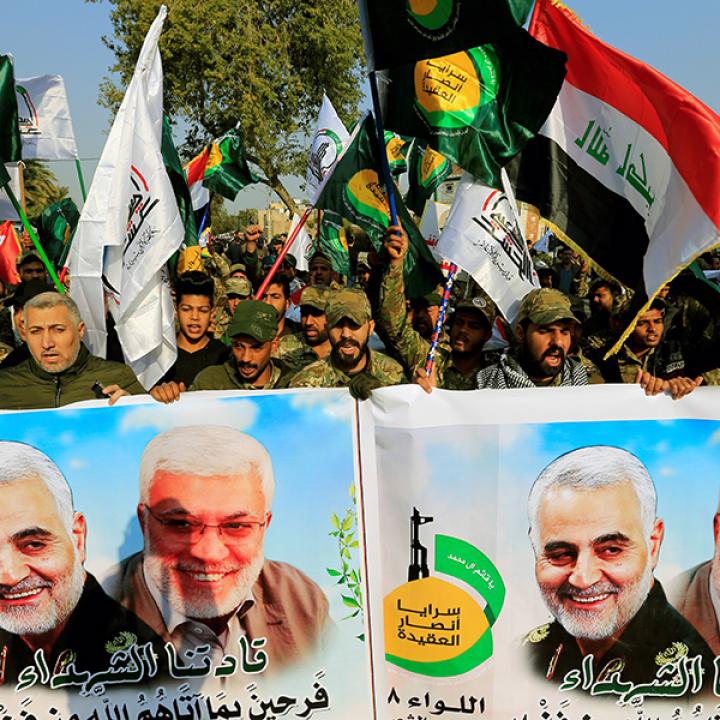
- Policy Analysis
- Articles & Op-Eds
Soleimani Is Dead: The Road Ahead for Iranian-Backed Militias in Iraq
Also published in CTC Sentinel

Iraqis have expressed broad political, religious, and public support for checking the militias more quickly, so the U.S. government should take several steps toward that end.
The killing of Qassem Soleimani and Abu Mahdi al-Muhandis struck right at the core of the Iranian and militia projects in Iraq, and it occurred after months of anti-government protests had already shaken their towering control of the Iraqi state. Before the protests, al-Muhandis and the Iran-backed militias were at the zenith of their power. They controlled the prime minister’s office, dominated any security portfolios they selected, and were positioned to divert value from many major economic ventures to Iraqi militias, Iran’s Revolutionary Guard, and Lebanese Hezbollah. This unnatural level of consolidation was built and sustained by Soleimani and al-Muhandis. Their removal, in combination with resistance from protestors, religious leaders, and the international community, could slow or stall the consolidation of militia power in Iraq. Iran’s most favored allies have been clearly defined in the twin crises: Badr, Kata’ib Hezbollah, Kata’ib Sayyed al-Shuhada, Saraya Talia al-Khurasani, and Asa’ib Ahl al-Haq. They failed to defeat the Sadrist-backed protests, and they look unlikely to evict U.S. forces from Iraq. The Revolutionary Guard will likely face an uphill struggle to prevent greater disharmony and fragmentation in the militia ranks, where the likely focus will be a race for positions, resources, and self-preservation...
To read the full article, download the PDF above or visit the CTC website.




